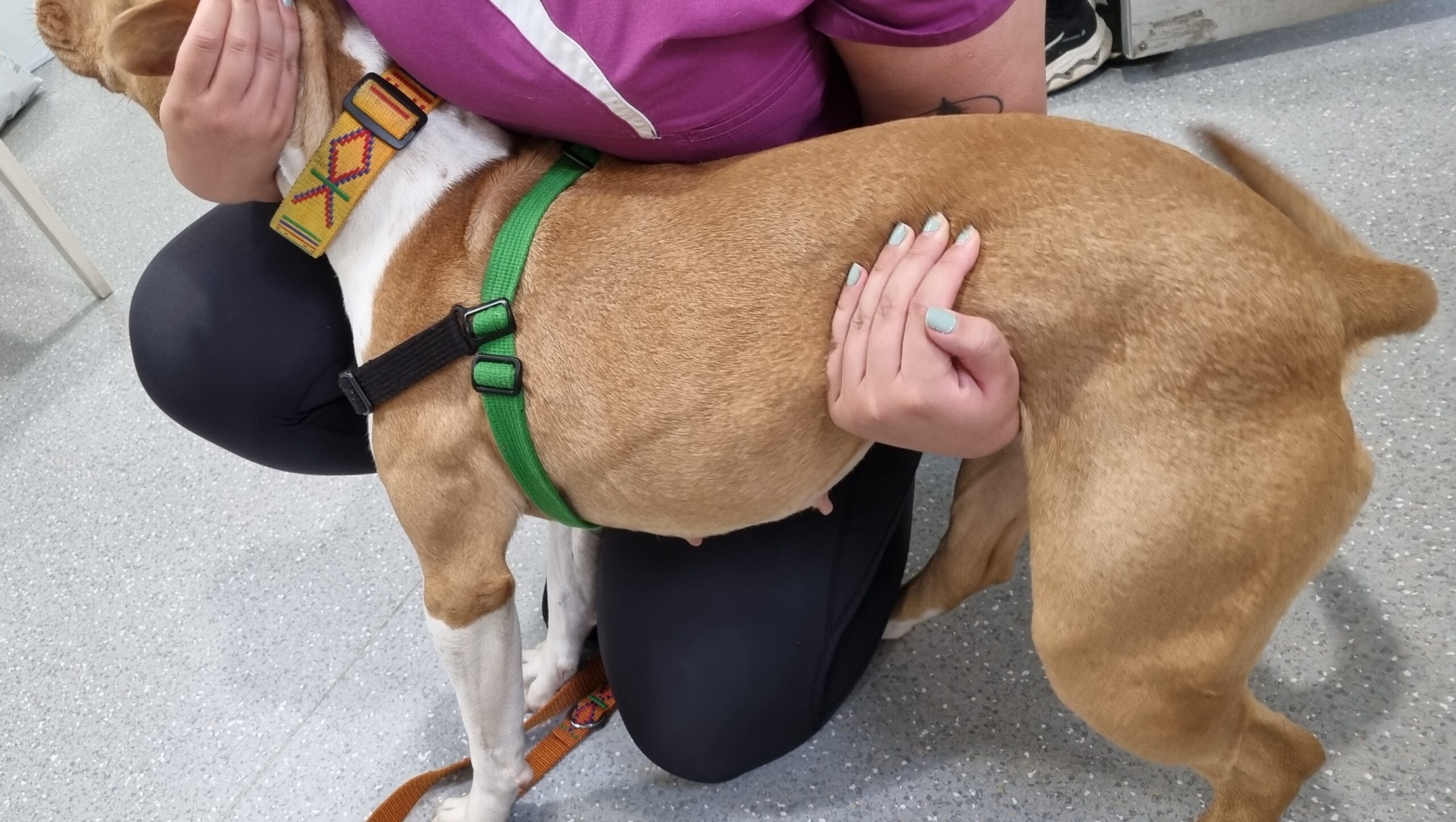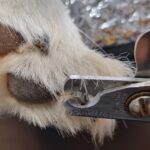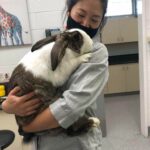
Examinations of nervous patients is becoming increasingly common place at our practice and many others. Unfortunately anxious pets do also need Veterinary care from time to time, and whilst our aim is to provide fear free visits and examinations, it can be a real challenge providing this at times. If only we could explain to anxious pets that we are just trying to help.
Even if your dog is relaxed and friendly at home, the prospect of veterinary treatment may sometimes cause increased anxious behaviour. These pets often have underlying anxious temperaments, and naturally become more stressed when out of their home environment.
Many anxious pets
- Do not like being restrained,
- Have trouble staying still
- May display signs of anxiety like yawning, pacing, ears twitching, or wide eyes.
- Sometimes they may mouth your hands when trying to do things to them
- And if pushed may lash out and bite.
We want to make every visit as stress free as possible for your pet so here’s how you can help us to care for your worried dog in the clinic.
As many pets do not understand that we are only trying to help, we need to utilise a combination of positive reinforcement (such as distraction and rewards with pats and treats) and /or gentle physical restraint. Unfortunately these techniques may not work in every situation, and some worried pets do need calming medication used prior to their visit, so that we can safely achieve our healthcare goals.
Treats
We have pet treats in the clinic, but it can help if you don’t feed your dog for several hours prior to coming in, so they’re more receptive to snacks.
If your dog is picky with treats or has any special dietary needs, it’s best for you to bring along some of their favourite treats from home to use during the visit.
Restraint
Provided it is safe for you to do so, it can be helpful for you to perform a calming but firm “hug-hold” on your nervous dog whilst we’re examining them. This involves your dog standing or sitting (on the floor or on the examination table, depending on their size), pressed side-on against your front body, with one of your arms passing under their neck to press their head against your shoulder, and the other arm passing over their back to hug their body close to you.
This may take some practice and we will guide you, but it is also worth practicing at home
Cats can be a little trickier and often a towel wrap can be helpful for some.
Further measures
If your dog is particularly anxious or shows nervous-aggressive tendencies, we may need to postpone the examination or treatment. We will often look a providing calming/ anti-anxiety medication to be given prior to any further visits, and in some cases a sedative may also be needed.
For highly anxious pets and ongoing visits, muzzle training may appropriate and needed for everyone safety. This is where you teach your pet to wear a muzzle at home and become comfortable with it on associated with positive reinforcements like treats and pats.
Preparation
It can also be very helpful to get your pup used to sitting or standing still when having their eyes, ears or teeth checked. If they trust you it will reduce their stress and allow us to provide the best care possible.
Unrealistic expectations
One of the biggest hurdles we face as Vets and Nurses, is that many owners fail to recognize anxious behaviours, or refuse to acknowledge that their pet is anxious and become dangerous if pushed. Comments like “they are not like this at home”, or “they have never tried to bite someone before” is all too common. Remember if your pet won’t allow you to perform an action like look in its mouth, or trim its nails, then it is less likely they will allow a stranger to do it.
We are here to help your pet, but we need to do so in a way that reduces their stress, and is safe for our team. In our profession being bitten or scratched occurs from time to time, there can be both physical and mental scars from such injuries, and we are always working towards a safer workplace for all.
The best way we can anxious pets, is to increase the awareness around behaviours related to anxiety, show a lot of patience and employ a gentle approach. Most importantly however, we need your understanding and help.
If you feel your pet is likely to become very stressed in the clinic, give our friendly team a call to ask for further advice. Our goal is low-stress health care for every pet!





